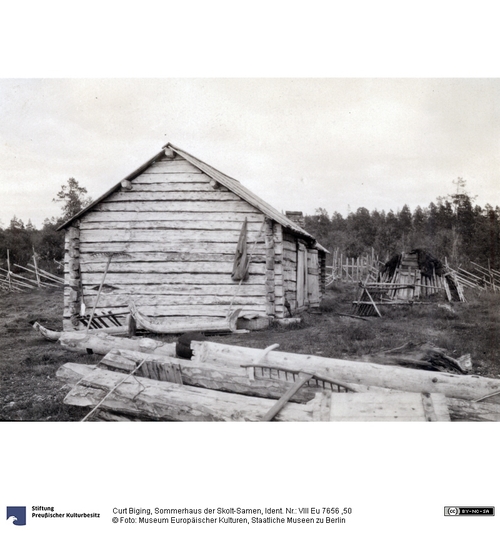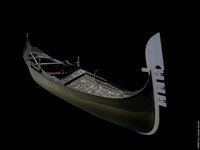Abgebildet ist ein Haus der Skolt-Samen in Kolttaköngäs.
Kolttaköngäs (nor: Skoltfossen) ist die finnische Bezeichnung für den Ort Boris Gleb. Seit den 1940 Jahren gehört das Gebiet Petsamo und der Ort Boris Gleb zu Russland. Boris Gleb ist seither unter dem Namen Borisoglebski und Petsamo unter Petschenga verzeichnet.
Mit den, in der Bildbezeichnung und in Bigings "Inari- Eine Lapplandfahrt" erwähnten "Kolt-Lappen" sind die im Petsamo-Gebiet (heute Petschenga, Russland) ansäßigen Skolt-Samen.
Inventarbuchtitel: "Sommerhaus der Koltlappen Kolttaköngäs"
en

